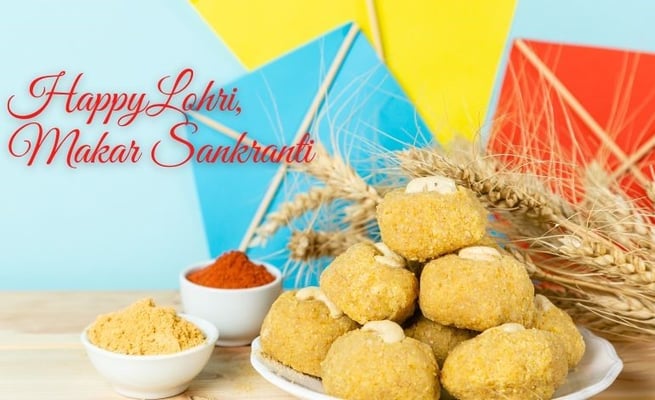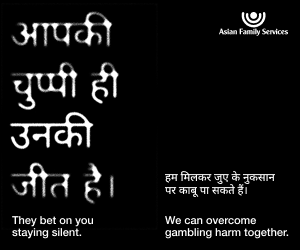SANKRANTI: THE PAN-INDIA FESTIVAL THAT'S CELEBRATED ACROSS SOUTHEAST ASIA

The Gregorian New Year’s first pan-Indian Hindu festival falls on Saturday, 14 January. Best known as Makara Sankranti in many regions of India, it is celebrated across the subcontinent with many names including as Magh Bihu in Assam, Maghi in Punjab, Maghi Saaji in Himachal Pradesh, Maghi Sangrand or Uttarain in Jammu, Sukarat in central India, Pongal in Tamil Nadu, Uttarayana in Gujarat and Uttar Pradesh, Ghughuti in Uttarakhand, Dahi Chura in Bihar and several other local names.
The festival of Lohri, popularly celebrated in Northern India, particularly in Punjab, falls a day before Makara Sankranti on January 13.
Makar Sankranti is the only Hindu festival that is celebrated according to the solar calendar every year on the 14th of January to mark the beginning of the sun's journey towards the northern hemisphere, also known as the Uttarayana. This festival is celebrated as the day when the sun enters the zodiac sign of Capricorn, signaling the end of the winter solstice and the beginning of longer days.
The name "Makara Sankranti" is derived from the Sanskrit words "makara," which signifies "Capricorn," and "sankranti," which means "transition."
Though the festival is celebrated in various parts of the country with different names and customs, the main theme remains the same: the celebration of the sun's movement towards the northern hemisphere, which is considered to be a time of positivity, growth, and prosperity.
Makar Sankranti is an important festival in Hindu mythology as it marks the end of the month of Pausha, which is considered to be an inauspicious month, and the beginning of the month of Magha, which is considered to be a month of auspiciousness. It is believed that on this day, the sun enters the zodiac sign of Makara, which is why it is called Makar Sankranti.
One of the main customs associated with Makar Sankranti is the offering of oblations to the gods. This is done by offering various grains, fruits, and sweets to the gods as a way of seeking their blessings. In some parts of the country, people also offer oblations to the sun god, Surya, as a way of seeking his blessings for a healthy and prosperous year ahead.
A popular tradition of Makar Sankranti is the flying of kites. This tradition is especially popular in Gujarat and Rajasthan, where people flock to rooftops and open spaces to fly kites. The skies are filled with colourful kites of all shapes and sizes, and people compete with each other to see who can keep their kite in the air the longest.
In addition to these customs, Makar Sankranti is also celebrated with the singing of devotional songs and the performance of cultural programmes. People also exchange sweets and gifts with their loved ones as a way of expressing their love and appreciation.
People give each other sweets such as til ke laddoo (sweet balls made of sesame seeds and jaggery) and til chikki (a sweet made of sesame seeds and jaggery). These sweets are thought to be auspicious and are believed to bring good luck.
In addition to these traditions, Makar Sankranti is also a time for people to come together and celebrate with friends and family. Many people hold special prayers and pujas (worship ceremonies) to honour the sun god, Surya, and to seek his blessings.
Despite the various ways in which Makar Sankranti is celebrated across India, one thing that is common to all celebrations is the feeling of joy and happiness that permeates the air. This festival brings people together and helps to strengthen the bonds of friendship and family.
Makar Sankranti is a beloved and widely celebrated festival in India. It marks the end of the winter solstice and the beginning of longer days, and is celebrated in various ways, including the flying of kites, taking dips in holy rivers, and exchanging sweets. It is a time for people to come together and celebrate with friends and family, and is infused with feelings of joy and happiness.
Makara Sankranti internationally
Makar Sankranti is also celebrated in some countries in Southeast Asia, such as Indonesia, Thailand, and Nepal. In these countries, the festival is known by different names, but it is celebrated in a similar way to how it is celebrated in India.
In Indonesia, Makar Sankranti is known as "Hari Raya Surya Tahun Baru," or "the day of the new sun year." It is a national holiday in Indonesia, and is celebrated with prayers and offerings to the sun god. People also fly kites and exchange sweets on this day.
In Thailand, Makar Sankranti is known as "Songkran," and it is celebrated as the traditional Thai New Year. It is a time for people to come together and pay respects to their elders, and for families to be reunited. Water is an important part of the celebrations in Thailand, and people often participate in water fights and splash each other with water as a way of washing away the past and starting the new year with a clean slate.
In Nepal, Makar Sankranti is known as "Magh Sankranti," and it is celebrated as the beginning of the month of Magh in the Nepali calendar. It is a time for people to pay respect to the sun god, and to make offerings to him. People also exchange sweets and participate in traditional games and dances on this day.
The Gregorian New Year’s first pan-Indian Hindu festival falls on Saturday, 14 January. Best known as Makara Sankranti in many regions of India, it is celebrated across the subcontinent with many names including as Magh Bihu in Assam, Maghi in Punjab, Maghi Saaji in Himachal Pradesh, Maghi Sangrand...
The Gregorian New Year’s first pan-Indian Hindu festival falls on Saturday, 14 January. Best known as Makara Sankranti in many regions of India, it is celebrated across the subcontinent with many names including as Magh Bihu in Assam, Maghi in Punjab, Maghi Saaji in Himachal Pradesh, Maghi Sangrand or Uttarain in Jammu, Sukarat in central India, Pongal in Tamil Nadu, Uttarayana in Gujarat and Uttar Pradesh, Ghughuti in Uttarakhand, Dahi Chura in Bihar and several other local names.
The festival of Lohri, popularly celebrated in Northern India, particularly in Punjab, falls a day before Makara Sankranti on January 13.
Makar Sankranti is the only Hindu festival that is celebrated according to the solar calendar every year on the 14th of January to mark the beginning of the sun's journey towards the northern hemisphere, also known as the Uttarayana. This festival is celebrated as the day when the sun enters the zodiac sign of Capricorn, signaling the end of the winter solstice and the beginning of longer days.
The name "Makara Sankranti" is derived from the Sanskrit words "makara," which signifies "Capricorn," and "sankranti," which means "transition."
Though the festival is celebrated in various parts of the country with different names and customs, the main theme remains the same: the celebration of the sun's movement towards the northern hemisphere, which is considered to be a time of positivity, growth, and prosperity.
Makar Sankranti is an important festival in Hindu mythology as it marks the end of the month of Pausha, which is considered to be an inauspicious month, and the beginning of the month of Magha, which is considered to be a month of auspiciousness. It is believed that on this day, the sun enters the zodiac sign of Makara, which is why it is called Makar Sankranti.
One of the main customs associated with Makar Sankranti is the offering of oblations to the gods. This is done by offering various grains, fruits, and sweets to the gods as a way of seeking their blessings. In some parts of the country, people also offer oblations to the sun god, Surya, as a way of seeking his blessings for a healthy and prosperous year ahead.
A popular tradition of Makar Sankranti is the flying of kites. This tradition is especially popular in Gujarat and Rajasthan, where people flock to rooftops and open spaces to fly kites. The skies are filled with colourful kites of all shapes and sizes, and people compete with each other to see who can keep their kite in the air the longest.
In addition to these customs, Makar Sankranti is also celebrated with the singing of devotional songs and the performance of cultural programmes. People also exchange sweets and gifts with their loved ones as a way of expressing their love and appreciation.
People give each other sweets such as til ke laddoo (sweet balls made of sesame seeds and jaggery) and til chikki (a sweet made of sesame seeds and jaggery). These sweets are thought to be auspicious and are believed to bring good luck.
In addition to these traditions, Makar Sankranti is also a time for people to come together and celebrate with friends and family. Many people hold special prayers and pujas (worship ceremonies) to honour the sun god, Surya, and to seek his blessings.
Despite the various ways in which Makar Sankranti is celebrated across India, one thing that is common to all celebrations is the feeling of joy and happiness that permeates the air. This festival brings people together and helps to strengthen the bonds of friendship and family.
Makar Sankranti is a beloved and widely celebrated festival in India. It marks the end of the winter solstice and the beginning of longer days, and is celebrated in various ways, including the flying of kites, taking dips in holy rivers, and exchanging sweets. It is a time for people to come together and celebrate with friends and family, and is infused with feelings of joy and happiness.
Makara Sankranti internationally
Makar Sankranti is also celebrated in some countries in Southeast Asia, such as Indonesia, Thailand, and Nepal. In these countries, the festival is known by different names, but it is celebrated in a similar way to how it is celebrated in India.
In Indonesia, Makar Sankranti is known as "Hari Raya Surya Tahun Baru," or "the day of the new sun year." It is a national holiday in Indonesia, and is celebrated with prayers and offerings to the sun god. People also fly kites and exchange sweets on this day.
In Thailand, Makar Sankranti is known as "Songkran," and it is celebrated as the traditional Thai New Year. It is a time for people to come together and pay respects to their elders, and for families to be reunited. Water is an important part of the celebrations in Thailand, and people often participate in water fights and splash each other with water as a way of washing away the past and starting the new year with a clean slate.
In Nepal, Makar Sankranti is known as "Magh Sankranti," and it is celebrated as the beginning of the month of Magh in the Nepali calendar. It is a time for people to pay respect to the sun god, and to make offerings to him. People also exchange sweets and participate in traditional games and dances on this day.








Leave a Comment